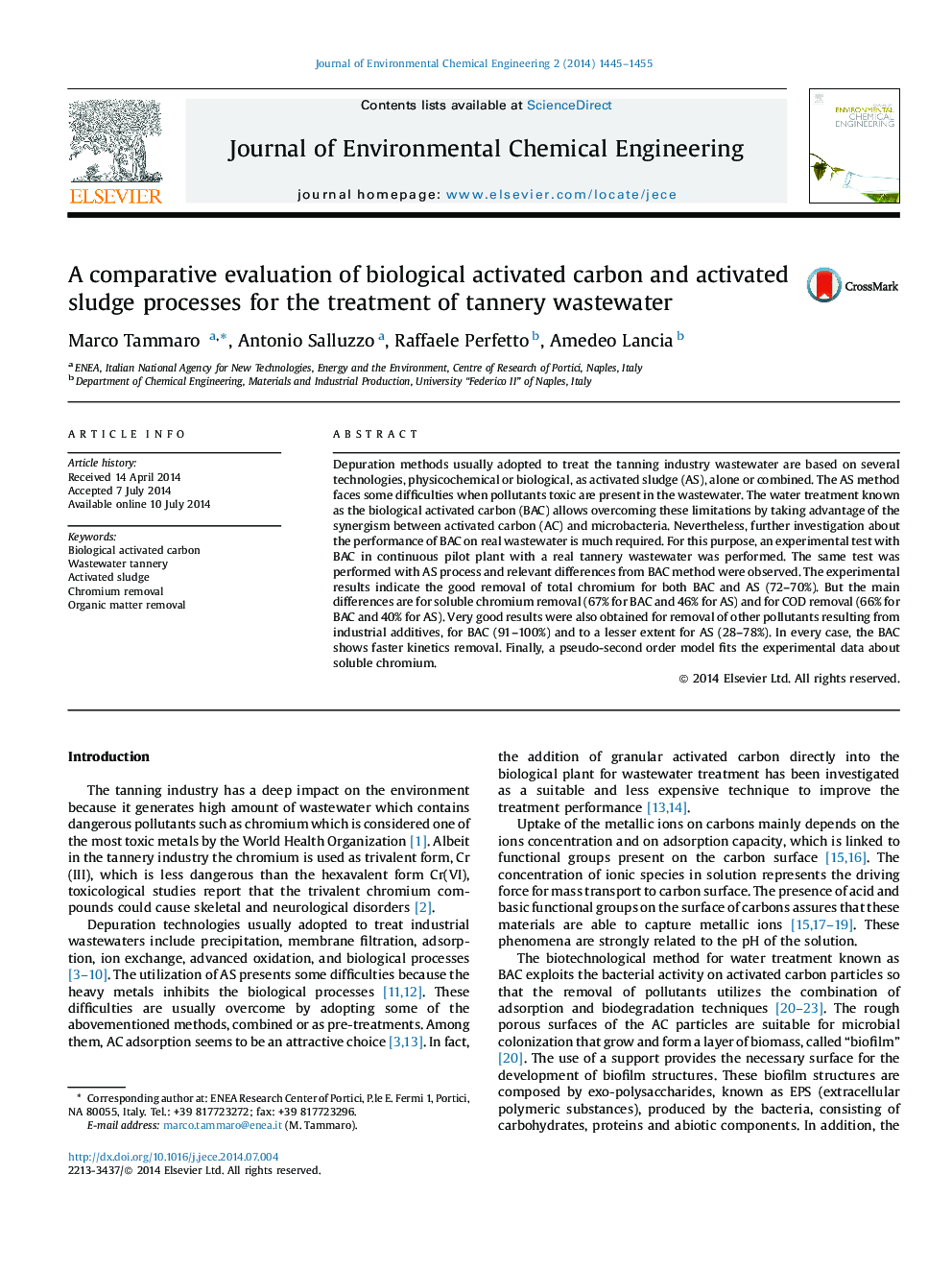| Article ID | Journal | Published Year | Pages | File Type |
|---|---|---|---|---|
| 221979 | Journal of Environmental Chemical Engineering | 2014 | 11 Pages |
•We assess the removal efficiencies of chromium from tannery wastewater through BAC.•We compare the above results with those obtained from activated sludge process.•We assess the removal of organic matter with the both abovementioned treatments.•Results show the key role of activated carbon, as sorbent and as support for biomass.•The biological activated carbon method shows the highest removal efficiencies.
Depuration methods usually adopted to treat the tanning industry wastewater are based on several technologies, physicochemical or biological, as activated sludge (AS), alone or combined. The AS method faces some difficulties when pollutants toxic are present in the wastewater. The water treatment known as the biological activated carbon (BAC) allows overcoming these limitations by taking advantage of the synergism between activated carbon (AC) and microbacteria. Nevertheless, further investigation about the performance of BAC on real wastewater is much required. For this purpose, an experimental test with BAC in continuous pilot plant with a real tannery wastewater was performed. The same test was performed with AS process and relevant differences from BAC method were observed. The experimental results indicate the good removal of total chromium for both BAC and AS (72–70%). But the main differences are for soluble chromium removal (67% for BAC and 46% for AS) and for COD removal (66% for BAC and 40% for AS). Very good results were also obtained for removal of other pollutants resulting from industrial additives, for BAC (91–100%) and to a lesser extent for AS (28–78%). In every case, the BAC shows faster kinetics removal. Finally, a pseudo-second order model fits the experimental data about soluble chromium.
